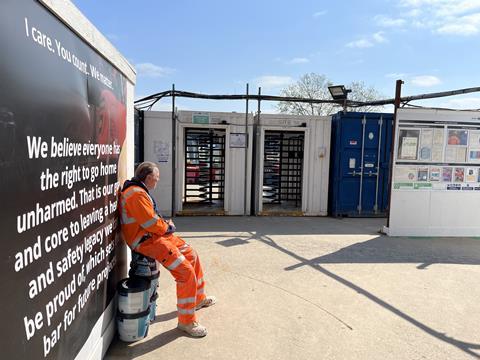Industry records strongest performance of Q2 with 1.6% growth
Construction output grew in June according to the latest ONS figures but analysts warned declining public sector buying could spell trouble for the industry.
The industry’s total output was up 1.6% in the month, driven by increases in both new work (2%) and repair and maintenance (1.1%), with six of nine sectors experiencing growth.
Infrastructure new work and non-housing repair and maintenance were the main contributors to growth, increasing 4.7% and 3.4% respectively.
The relatively strong performance in June helped the sector achieve 0.3% growth in the second quarter, despite declining output in April and May.

Mike Hedges, director at contractor Beard, said the growth in output was positive news for the industry and “mirrors what we’re seeing on the ground”.
“We’ve seen firsthand this consistent trend of clients looking to improve and repair, rather than replace,” he said.
“For some, this may reflect the tougher borrowing conditions and access to credit that is preventing them from committing to new construction projects.
“However, we’re seeing greater emphasis being placed on maximising the value of the assets they already have, as well reducing both waste and the loss of embodied carbon.”
Repair and maintenance output in June was 7.3% higher than in the same month the previous year.
But the ONS’ new order figures suggest that infrastructure’s growth could be fragile with the sector down 26% in the quarter and 43% year-on-year, while other public sector work was down 32% and 24% respectively.
“Whilst you would expect infrastructure orders to vary quite a lot, the scale of reduction in demand from the public sector at a time when headwinds affecting private sector investment are growing is a great concern,” warned Simon Rawlinson, head of strategic research and insight at Arcadis.
He attributed the decline to a combination of delays due to viability and the effect of cancelled or reduced programme scopes.
The pressures put on major projects has been well publicised, with the government’s decision to freeze elements of HS2’s build programme the most high-profile example.
Rawlinson added: “To put the data in perspective, excluding 2020, when covid had a huge disruptive effect across the industry, these are the lowest quarterly orders in real terms since April 2012, which in itself was the bottom of the post-financial crash trough.
“Given poor investment conditions, private sector orders held up quite well in the 2nd quarter. However, demand from the public sector fell away dramatically, showing that there are few if any safe haven markets in construction in 2023.”



























No comments yet